Japanese soups, revered for their delicate balance of flavors and nourishing qualities, hold a cherished place in Japan's culinary tradition. From the iconic miso soup to the comforting bowls of ramen and the elegant simplicity of clear broth soups like suimono, Japanese soups offer a diverse array of flavors and textures. These soups are crafted with precision, utilizing umami-rich ingredients such as dashi, seaweed, tofu, and seasonal vegetables. Whether enjoyed as a prelude to a meal, a hearty lunch, or a comforting remedy for cold weather, Japanese soups provide a soul-soothing experience that embodies the essence of Japanese culinary philosophy and craftsmanship.
Ramen
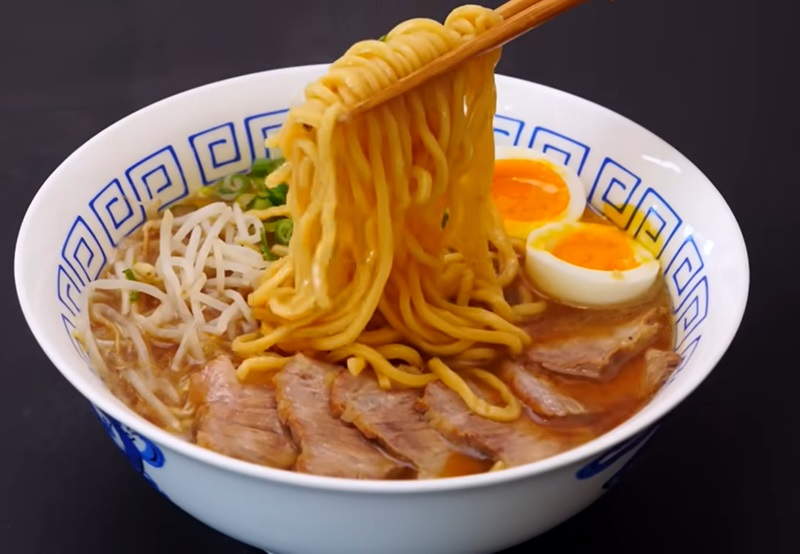
Ramen, a quintessential dish in Japanese cuisine, is a hearty and flavorful soup that has gained immense popularity worldwide. This delectable dish consists of wheat noodles served in a savory broth, topped with a variety of ingredients. The base of ramen broth can vary, with the most common types being shoyu (soy sauce), miso (fermented soybean paste), and tonkotsu (pork bone). Each broth offers its unique taste and character, ranging from rich and creamy to tangy and robust. The noodles used in ramen are typically long and thin, providing a satisfying chewiness. They are cooked to perfection and then added to the piping hot broth. Alongside the noodles, ramen is traditionally garnished with sliced chashu (braised pork), soft-boiled eggs, chopped green onions, bamboo shoots, and nori (seaweed). With its comforting warmth and umami-packed flavors, ramen is a beloved dish that can be enjoyed in various regional styles across Japan.
Miso Soup
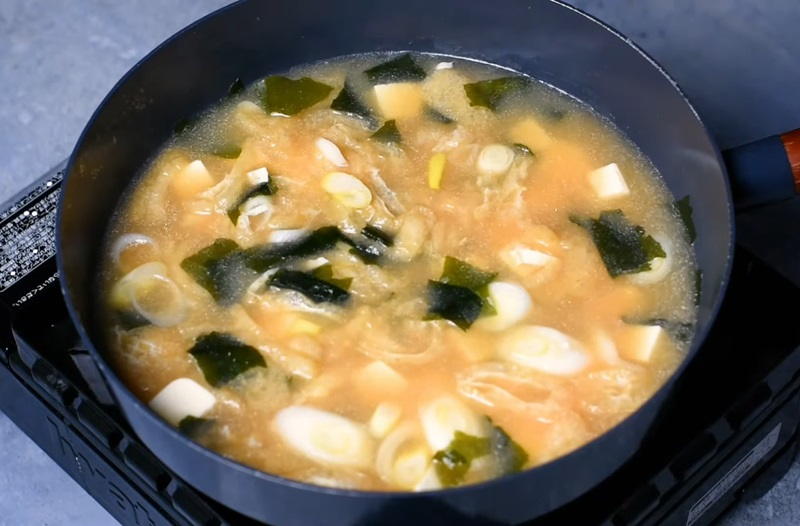
Miso soup is a traditional Japanese dish that has been enjoyed for centuries. It is a simple yet flavorful soup made from dashi (a fish and seaweed stock) and miso paste. The miso paste is made by fermenting soybeans with salt and a koji culture, resulting in a rich and savory flavor. The basic ingredients of miso soup include miso paste, dashi stock, tofu, and various vegetables such as green onions, seaweed, and mushrooms. However, the ingredients can vary depending on personal preference and regional variations. Miso soup is known for its umami flavor, which is a combination of savory and slightly sweet taste. I.
Shabu-Shabu
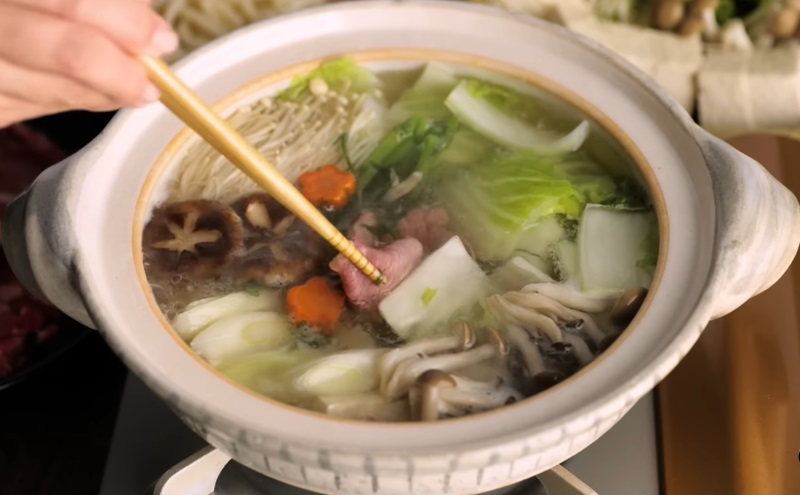
Shabu-shabu is a popular Japanese dish that consists of thinly sliced meat and various vegetables cooked in a hot pot of boiling broth. The name "shabu-shabu" comes from the sound made when the meat is swished back and forth in the broth. The key to a delicious shabu-shabu is the quality of ingredients used. Typically, thinly sliced beef or pork is chosen, but some variations also include chicken, seafood, or even tofu for a vegetarian option. The vegetables commonly used include Napa cabbage, mushrooms, carrots, and green onions. To enjoy shabu-shabu, diners are provided with a personal hot pot filled with a flavorful broth, which can be a simple kombu (kelp) dashi or a more complex miso or soy-based broth. The thinly sliced meat and vegetables are then cooked by dipping them briefly into the boiling broth until they are cooked to perfection.
Oden
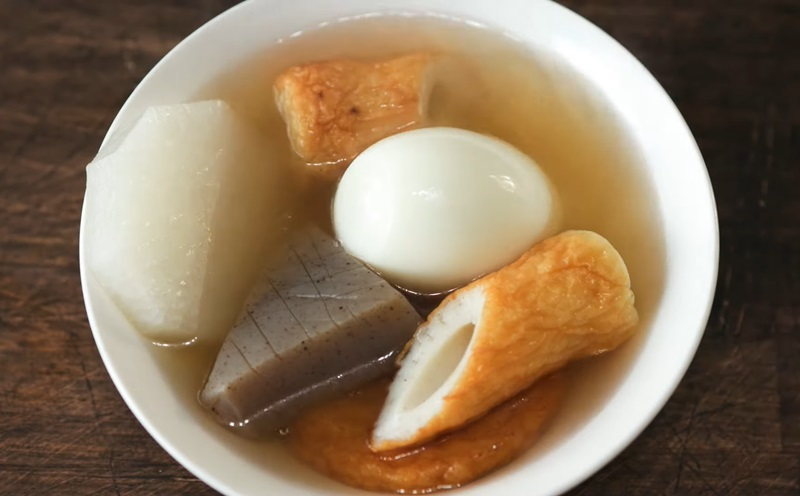
Oden is a traditional Japanese dish that consists of various ingredients simmered in a flavorful broth. It is commonly enjoyed during the colder months and is a popular comfort food in Japan. The dish typically includes a variety of ingredients such as daikon radish, konnyaku (a type of jelly-like food made from devil's tongue yam), boiled eggs, tofu, fish cakes, and sometimes even meat or vegetables like cabbage. The ingredients are simmered in a soy-based broth, which is often enhanced with dashi (a Japanese soup stock) for added umami flavor. The slow simmering process allows the ingredients to absorb the rich flavors of the broth, resulting in a hearty and comforting dish. One of the distinctive features of oden is the use of skewers to serve the ingredients. Each ingredient is skewered individually, making it easy to choose and enjoy your desired combination.
Sukiyaki
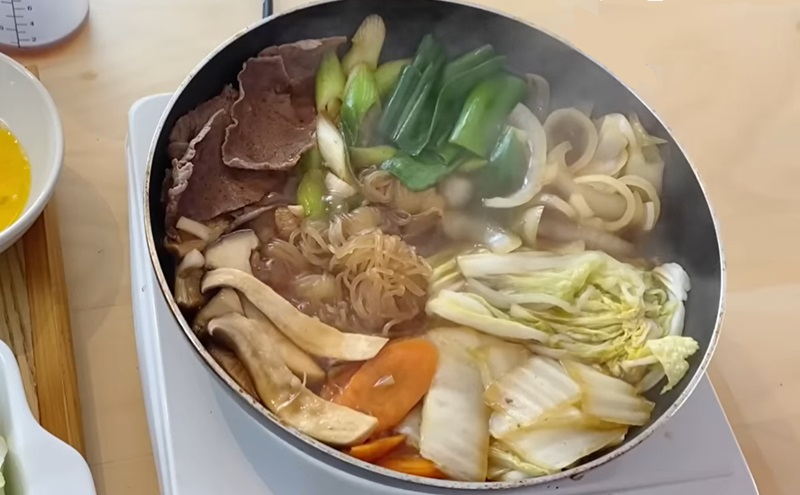
Sukiyaki is one of the most famous and beloved Japanese soups and stews. It is a hot pot dish traditionally cooked at the table using thinly sliced beef, tofu, vegetables, and noodles. The ingredients are cooked in a flavorful broth made from soy sauce, sugar, and mirin, giving the dish a sweet and savory taste. The preparation of Sukiyaki involves layering the ingredients in the pot and simmering them together until they are cooked to perfection. The beef slices are typically marbled with fat, which adds richness and tenderness to the dish. Along with the beef, popular ingredients include tofu, shiitake mushrooms, green onions, and leafy vegetables like cabbage or spinach. Sukiyaki is often enjoyed during the colder months as a comforting and nourishing meal. It is common to dip the cooked ingredients in beaten raw eggs before eating, which adds a creamy and silky texture to the dish.
Nabemono
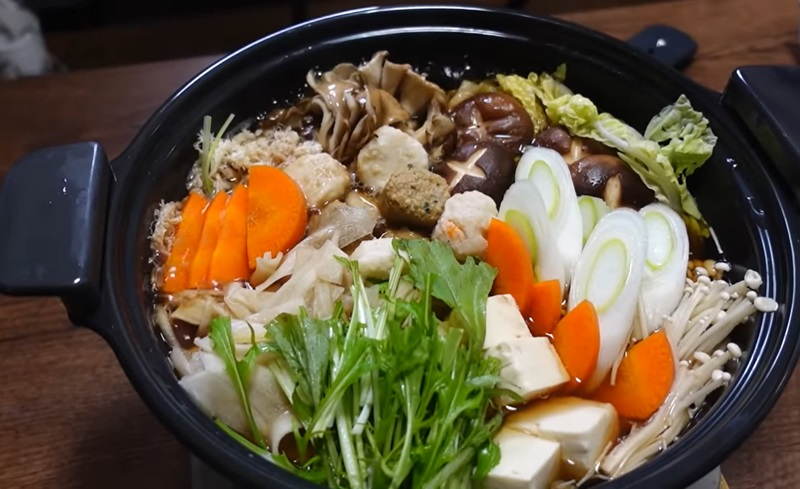
Nabemono is a traditional Japanese dish that encompasses a wide variety of soups and stews. It is typically enjoyed during the colder months and is a popular choice for gatherings and family meals. One of the most well-known types of nabemono is sukiyaki, which features thinly sliced beef cooked in a sweet and savory soy-based broth along with an assortment of vegetables like tofu, mushrooms, and green onions. Another popular option is shabu-shabu, where diners cook thinly sliced meat and vegetables by swishing them in a boiling kombu (kelp) broth. Other variations of nabemono include chankonabe, a hearty stew often consumed by sumo wrestlers, and yosenabe, a seafood-based stew with a soy-based broth. These dishes typically include an array of ingredients such as fish, shrimp, clams, tofu, and a variety of vegetables. Nabemono is not only enjoyed for its taste but also for the interactive dining experience it offers. Diners gather around a communal pot placed at the center of the table and cook their own ingredients, adjusting the flavors with dipping sauces and condiments. This communal aspect makes nabemono a favorite choice for social gatherings and bonding with friends and family.
Tsukemen
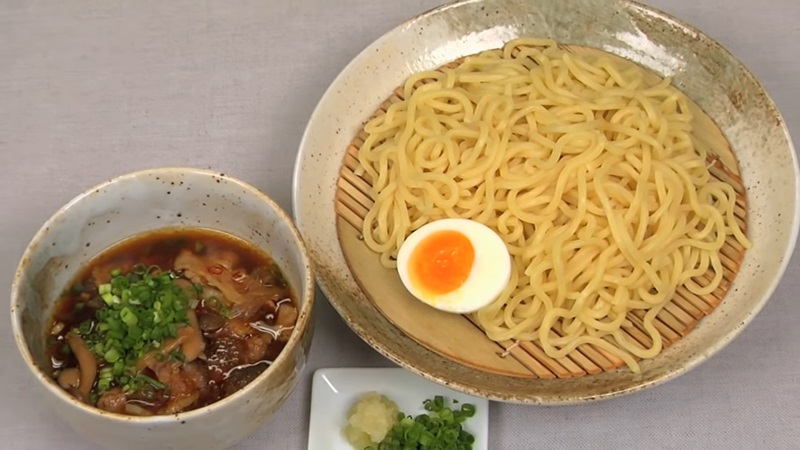
Tsukemen, a Japanese ramen variant, features separate servings of cold noodles and hot soup or broth. Soba or udon noodles are dipped in the hot soup, serving to season and moisten them. The dish may include additional toppings like nori, chashu, menma, tamago, and boiled eggs, either served atop or on the side.
Chankonabe
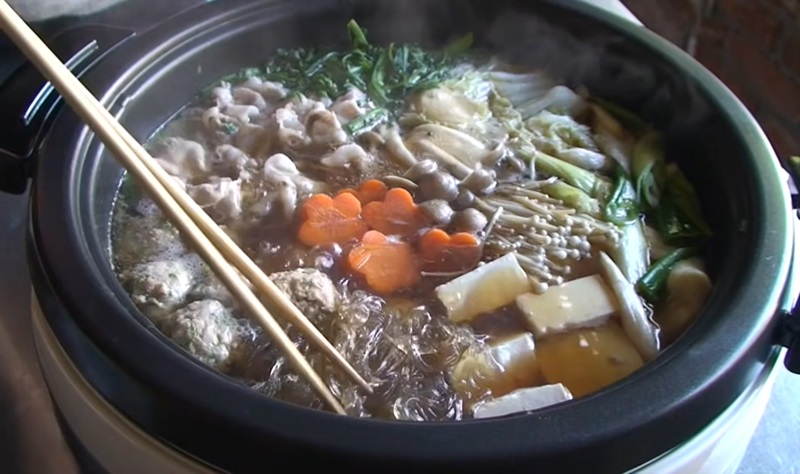
Chankonabe is a traditional Japanese dish that is popular among sumo wrestlers. It is a hearty and nutritious soup or stew that is packed with various ingredients. The word "chankonabe" literally means "sumo wrestler's stew," as it is known for its ability to provide substantial sustenance to these athletes. The base of chankonabe is typically made with a flavorful broth, often made from chicken or fish stock. It is then filled with an assortment of ingredients such as chicken, seafood, tofu, vegetables, and noodles. Chankonabe is not only known for its delicious taste but also for its health benefits. It is a protein-rich dish that provides essential nutrients and energy, making it an ideal meal for those who engage in physically demanding activities.
Nikujaga
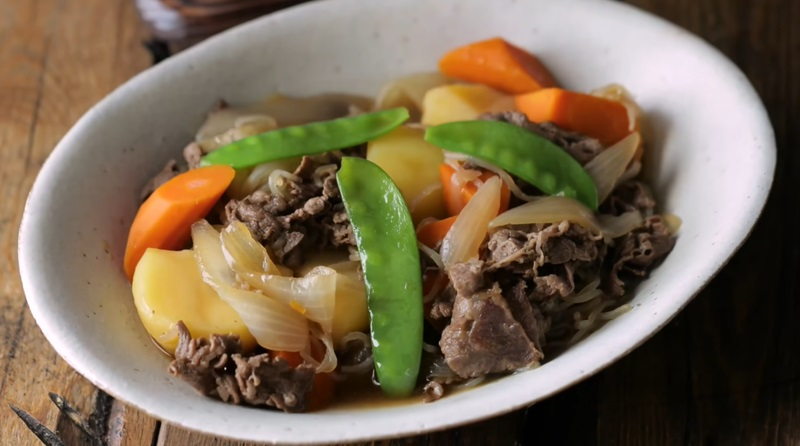
Nikujaga is a hearty and comforting soup or stew that combines tender chunks of beef with potatoes and other vegetables in a flavorful broth. The name "nikujaga" translates to "meat and potatoes," which perfectly describes the main ingredients of this dish. To make nikujaga, thinly sliced beef is first sautéed with onions and then simmered in a mixture of soy sauce, sugar, and dashi (a traditional Japanese stock). The beef becomes tender and flavorful as it cooks in the savory broth. Potatoes are added to the pot and cooked until they are soft and absorb the delicious flavors of the broth. Additional vegetables such as carrots, green beans, and mushrooms can also be added to nikujaga, providing extra texture and nutrients.
Motsunabe
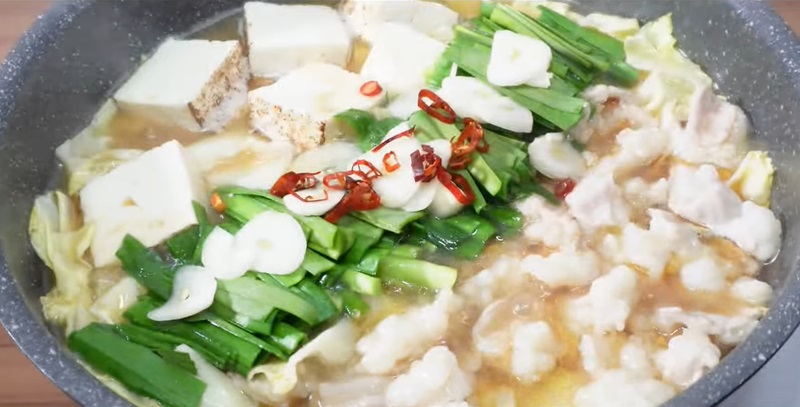
Motsunabe is a traditional and popular Japanese dish known for its rich and flavorful soup base. It is a type of hot pot dish that originates from Fukuoka, a city in southern Japan. The main ingredient of Motsunabe is motsu, which refers to the offal of beef or pork, such as intestines, liver, and stomach. These ingredients are simmered in a savory broth made from soy sauce, miso, and other seasonings, along with an abundance of vegetables like cabbage, leeks, and mushrooms. The soup of Motsunabe is often described as both hearty and delicate, with a mixture of umami flavors from the meat and vegetables. It is typically cooked at the dining table, where diners can add their preferred ingredients and cook them to their desired doneness.
Imoni
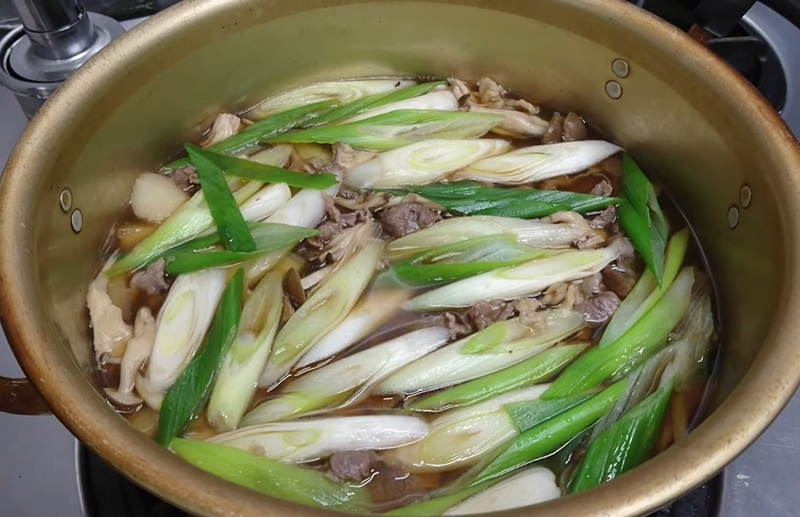
Imoni dish is a traditional Japanese soup or stew that is popular during the autumn season. The main ingredients of imoni dish typically include taro root, thinly sliced beef or pork, and various vegetables such as onions, carrots, and cabbage. The dish is prepared by simmering the ingredients in a soy-based broth that is seasoned with mirin, sake, and dashi, a traditional Japanese stock. The taro root is the star of the dish, providing a unique texture and earthy flavor to the soup.
Hōtō
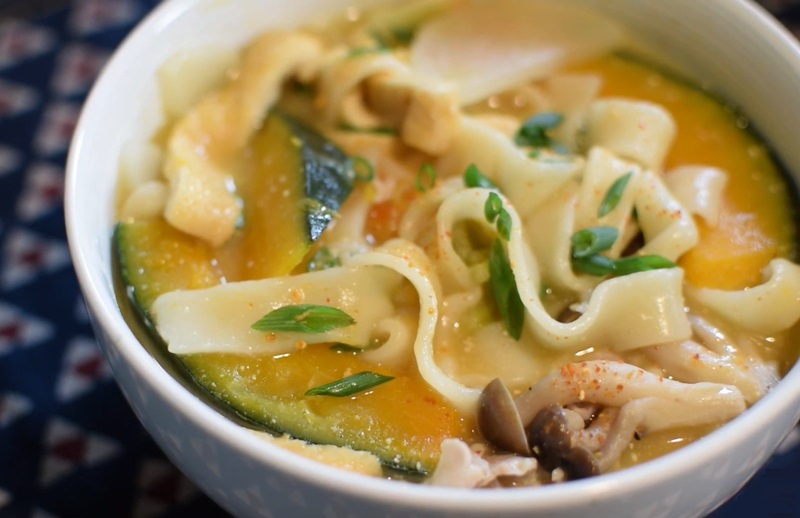
Hōtō is a traditional Japanese dish that originated in the Yamanashi region. It is a hearty and comforting soup or stew that is perfect for colder weather. Hōtō is made with thick, flat udon noodles, which are simmered with various vegetables and meat in a savory broth. The key to a delicious Hōtō dish lies in the broth. It is typically made with soy sauce, miso paste, and dashi stock, which creates a rich and umami flavor. The vegetables commonly used in Hōtō include pumpkin, cabbage, carrots, and potatoes, providing a delightful combination of textures and flavors. Meat options for Hōtō can vary, but pork is often the meat of choice. The pork is usually sliced thinly and added to the simmering pot, imparting its delicious taste to the dish. Some variations also include chicken or mushrooms for added depth.
Zosui
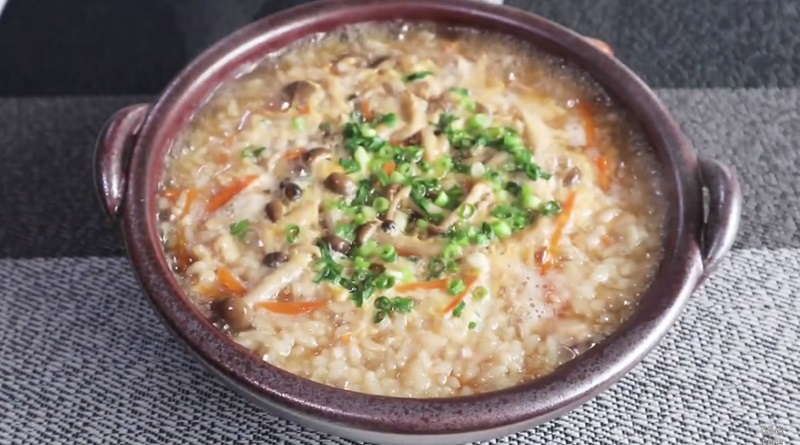
Zōsui is a delicate Japanese rice soup, reminiscent of a rice-based vegetable soup. Crafted from pre-cooked rice and dashi or water, it's seasoned with soy sauce or miso and cooked with ingredients like meat, seafood, mushrooms, and vegetables. Typically served during winter and reserved for those feeling unwell, zōsui comes in various varieties, such as maru zōsui (Chinese softshell turtle), fugu zōsui (pufferfish), tori zōsui (chicken), kani zōsui (crab), sukiyaki zōsui, and shabu-shabu zōsui.
Nimono
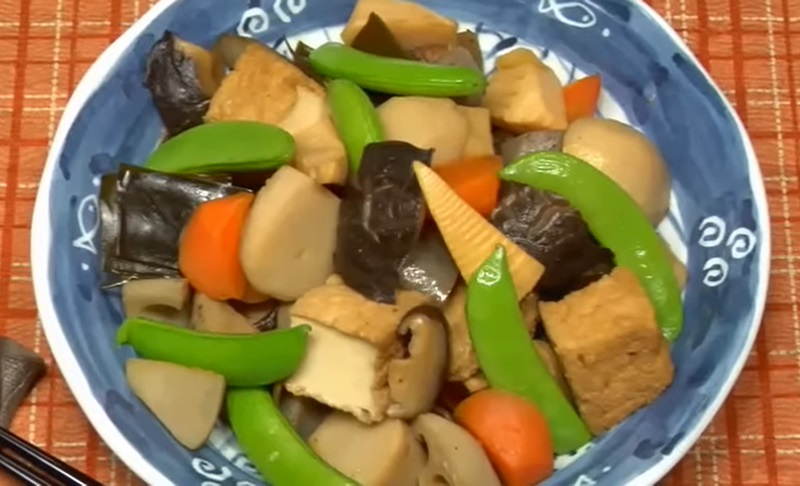
Nimono, a simmered dish in Japanese culinary tradition, involves gently cooking a base ingredient in shiru stock. The shiru, flavored with sake, soy sauce, and a hint of sweetness, is simmered until the liquid is absorbed or evaporates, imparting rich flavors to the primary ingredient, typically a vegetable, fish, seafood, tofu, or a combination. Dashi serves as the fundamental stock, while additional condiments like mirin, sugar, salt, vinegar, or miso may enhance the broth.
Cream stew
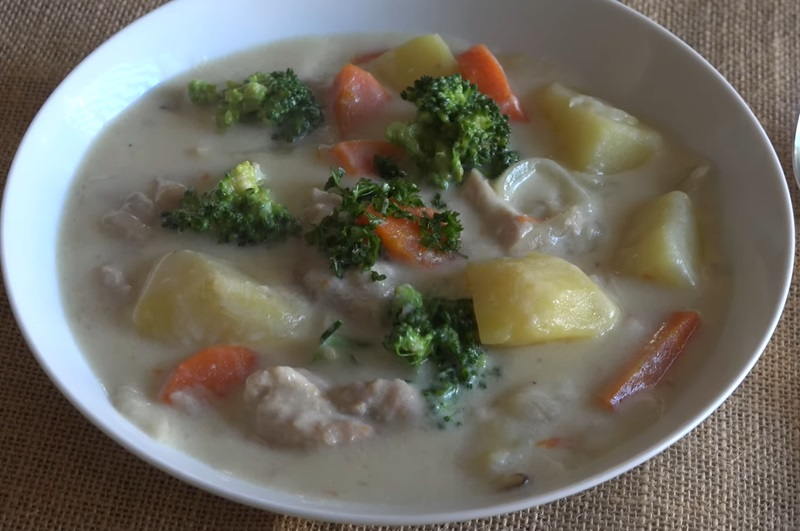
Cream stew, also known as "kureemu shichū" in Japanese, is a popular and comforting dish in Japan. It is a type of soup or stew that is made with a creamy and velvety white sauce, filled with a variety of vegetables, meat, and sometimes seafood. The base of the cream stew is typically made by sautéing onions, carrots, and other vegetables in butter or oil until they become soft and fragrant. Then, flour is added to create a roux, which helps to thicken the stew. Chicken, beef, or pork is commonly used as the protein, but seafood like shrimp or clams can also be added for extra flavor. The meat is typically simmered in the sauce until tender and fully cooked. The creamy sauce is made by adding milk or cream to the stew, giving it a rich and luscious texture. The stew is then seasoned with salt, pepper, and sometimes soy sauce or Worcestershire sauce for a hint of umami flavor.
Kiritanpo
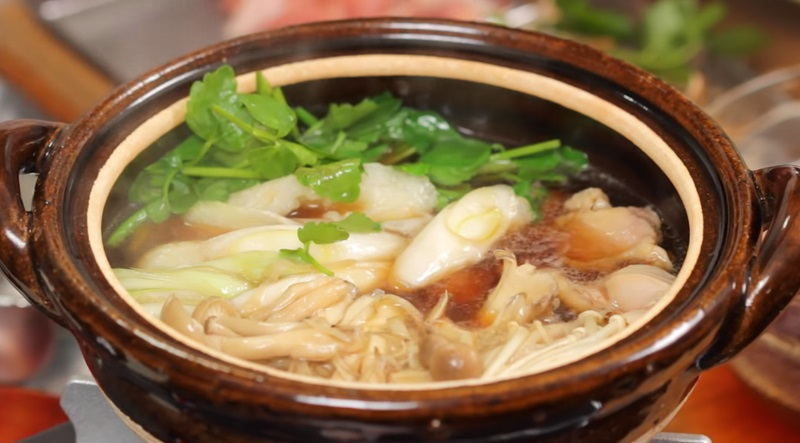
Kiritanpo dish is a traditional Japanese soup and stew that originates from the Akita prefecture in northern Japan. It is a hearty and comforting dish that is perfect for the cold winter months. The main ingredient of this dish is kiritanpo, which is a type of pounded rice formed into cylindrical shapes and grilled until golden brown. The kiritanpo is then simmered in a flavorful broth made from chicken, vegetables, and soy sauce. The stew is typically filled with an assortment of ingredients such as chicken, mushrooms, tofu, and vegetables like leeks and carrots, giving it a rich and satisfying taste. The kiritanpo dish is not only delicious but also visually appealing. The combination of the golden brown kiritanpo and the vibrant colors of the ingredients in the stew creates a beautiful presentation. It is often garnished with green onions and served hot in a traditional wooden bowl.
Zōni
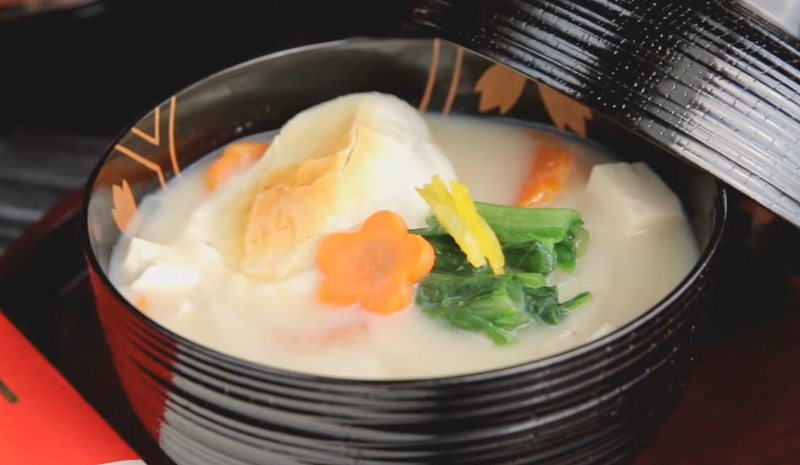
Zōni is a traditional Japanese soup or stew that is commonly enjoyed during New Year's celebrations. It is a hearty and comforting dish that consists of a flavorful broth, various ingredients, and mochi (a type of rice cake). Zōni is known for its regional variations, with different regions of Japan having their own unique take on the dish. The broth of zōni is typically made from dashi, a Japanese stock made from kombu (dried kelp) and bonito flakes (dried fish flakes). This gives the soup a rich umami flavor that serves as the base for the dish. Other ingredients commonly found in zōni include vegetables like daikon radish, carrots, and shiitake mushrooms, as well as proteins like chicken, beef, or seafood. One of the most distinctive elements of zōni is the mochi, which is added to the soup towards the end of cooking. The mochi becomes soft and chewy, adding a delightful texture to the dish.
Butajiru
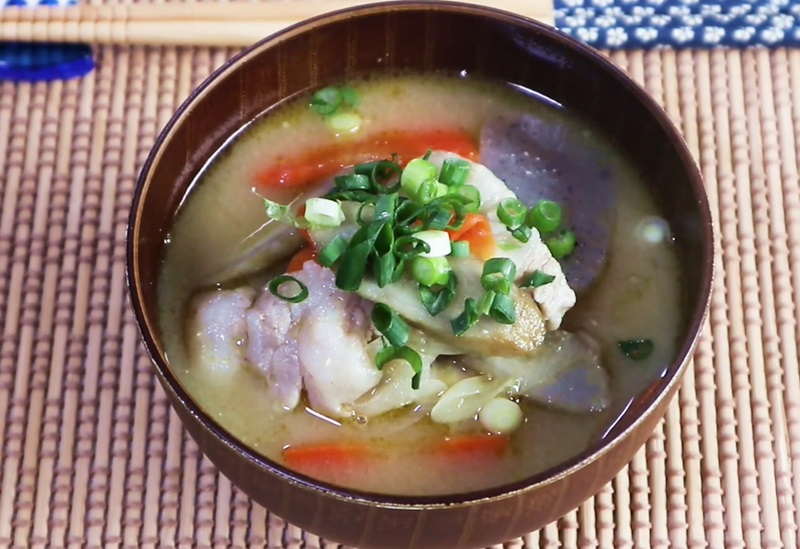
Butajiru, also known as Tonjiru, is a hearty and flavorful Japanese soup or stew that features pork as its main ingredient. This dish is a staple in Japanese cuisine, especially during the colder months. The base of Butajiru is typically made with dashi, a Japanese soup stock, which is then flavored with soy sauce and miso paste. The addition of miso paste gives the soup a rich and savory taste. The soup is then filled with various ingredients such as pork slices, root vegetables like carrots and daikon radish, mushrooms, tofu, and leafy greens like cabbage or spinach. Butajiru is often served with a bowl of steamed rice and is enjoyed as a complete meal. It is a comforting and filling dish that warms the body and soul. The combination of tender pork, hearty vegetables, and flavorful broth creates a delightful balance of flavors and textures.
Fugu Chiri
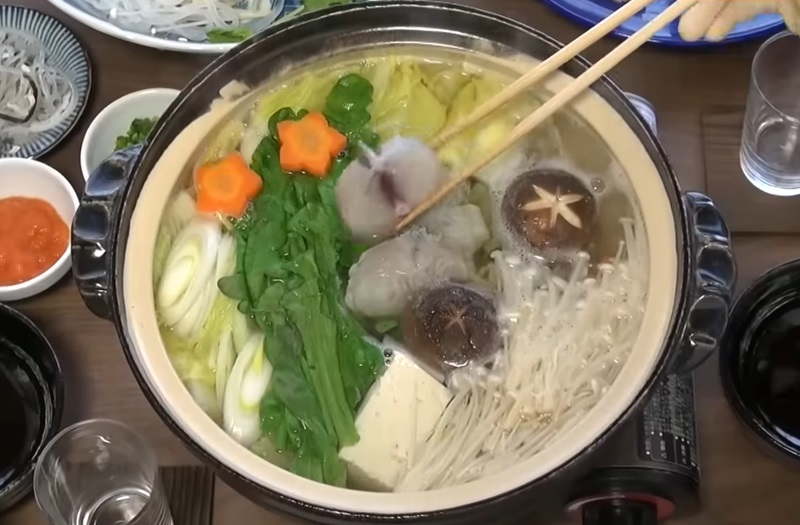
Fugu Chiri is a traditional Japanese soup or stew that is known for its unique and potentially dangerous ingredient - fugu, or pufferfish. Fugu is a highly poisonous fish if not prepared correctly, and therefore, only licensed and skilled chefs are allowed to handle and serve it. The dish typically consists of thin slices of fugu simmered in a flavorful broth along with various vegetables and tofu. The broth is usually made from a combination of dashi (a Japanese stock made from dried bonito fish flakes), soy sauce, mirin (sweet rice wine), and other seasonings. The vegetables commonly used include napa cabbage, mushrooms, and green onions, which add texture and flavor to the dish. Fugu chiri is often served hot in a communal pot, allowing diners to cook and enjoy the fish at their own pace. The delicate slices of fugu are known for their tender texture and subtle taste, while the broth is rich and savory.
Dojō nabe
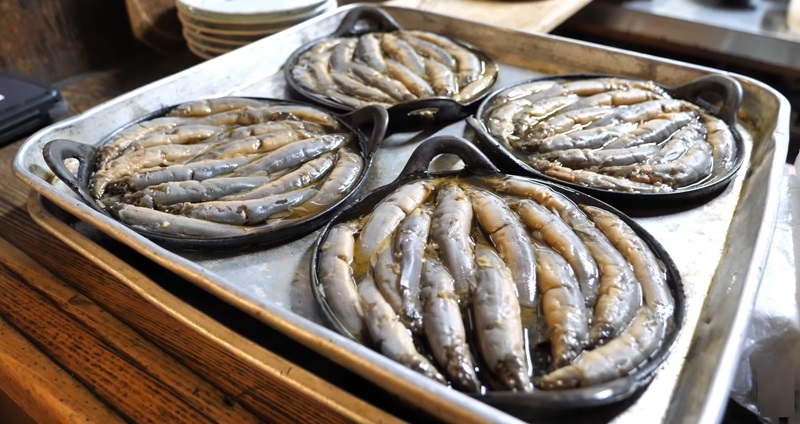
Dojō nabe is a traditional Japanese dish that consists of a flavorful soup or stew made with loach fish, commonly known as dojo in Japan. This dish is popular in various regions of Japan, especially during the colder months when warm and hearty meals are preferred. To prepare Dojō nabe, the dojo fish is first cleaned and seasoned with salt to enhance its natural flavors. The fish is then added to a hot pot along with a variety of vegetables such as napa cabbage, mushrooms, green onions, and tofu. The ingredients are simmered in a broth made from soy sauce, sake, mirin, and dashi stock, which infuses the dish with a rich and savory taste.


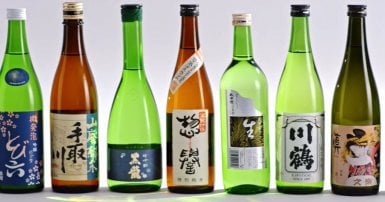
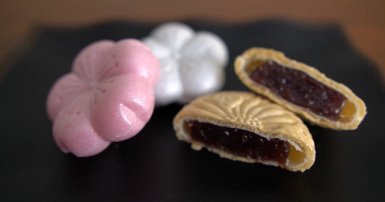


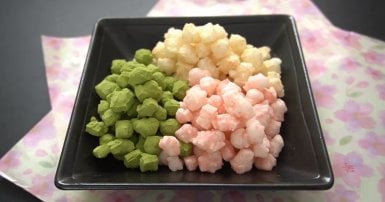
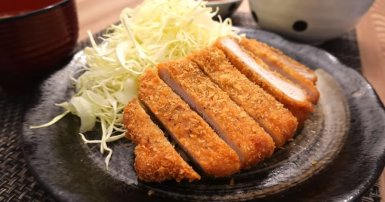
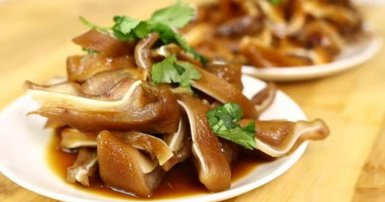
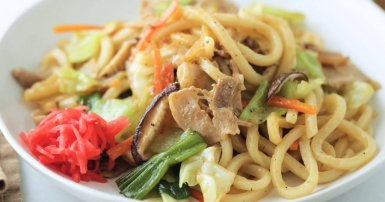

-1709813013.jpg)


